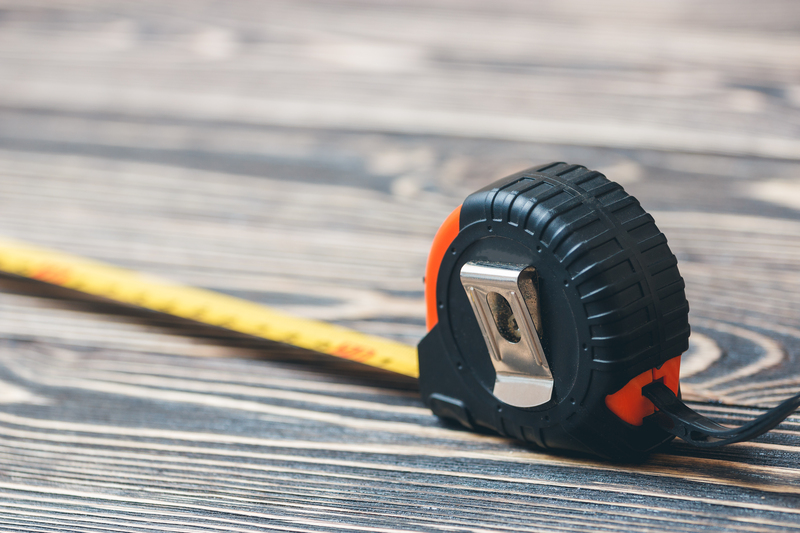Essential Steps for Storing a Freezer Properly During Downtime
If you own a freezer--whether it's for home use, commercial purposes, or as part of a foodservice operation--there may come a time when you won't use it for weeks or even months. Proper freezer storage during downtime is essential to prevent damage, keep it sanitary, and lengthen its lifespan. This comprehensive guide will walk you through the crucial steps for preparing and maintaining your freezer during periods of non-use, ensuring it's ready to serve you efficiently when needed again.

Why Proper Freezer Storage During Downtime Matters
Storing a freezer correctly during downtime isn't just about switching it off and forgetting about it. Inadequate preparation can lead to unpleasant odors, mold growth, electrical issues, or costly repairs. A well-maintained and correctly stored freezer will save you money, preserve appliance performance, and avoid unnecessary hassle in the future.
Potential Risks of Neglecting Freezer Storage
- Mold and mildew growth inside the appliance.
- Unpleasant odors due to food residue and moisture.
- Compressor or seal failures caused by improper positioning or storage.
- Pest infestations if the unit is not adequately cleaned out.
- Rust and corrosion on internal components and surfaces.
Taking the essential steps for storing a freezer properly during downtime will prevent these issues and keep your appliance in excellent condition.
Step 1: Remove All Contents from the Freezer
The first and arguably most vital stage is to completely empty your freezer. Never store your appliance with items inside, even for a short period. Leftover food can spoil, leak, and attract pests.
- Transfer any salvageable foods to another freezer or consume them ahead of your freezer's downtime.
- Dispose of expired, freezer-burned, or suspect items responsibly.
Tip: If you plan ahead, you can adjust your shopping and meal prep to avoid wasting food when downtime approaches.
Step 2: Defrost the Freezer Thoroughly
Defrosting the freezer is crucial when preparing for downtime. Ice build-up can lead to water damage, odors, or even mechanical strain once the unit is restarted.
How to Defrost Your Freezer Properly
- Unplug the freezer.
- Remove all shelves, drawers, and baskets.
- Place old towels around the base to catch water.
- Leave the lid or door open to encourage melting.
- Use a plastic spatula (never metal) to gently remove large ice chunks.
- For faster results, place bowls of hot water inside and close the door for 15-20 minutes at a time, replacing water as it cools.
Patience is essential: Never use sharp tools or force to remove ice, as this can damage the liner or coils.
Step 3: Clean and Disinfect the Interior
After defrosting, it's vital to clean and sanitize your freezer. Lingering debris or spills can create a breeding ground for bacteria or mold.
- Mix a solution of baking soda and warm water (about 2 tablespoons per quart) for an effective, non-toxic cleaner.
- Use a soft cloth or sponge to wipe down all interior surfaces, including shelves and gaskets.
- Pay extra attention to corners and seams where debris may accumulate.
- Rinse with clean water and wipe dry with a clean towel.
- For stubborn stains or lingering odors, add a little white vinegar to your cleaning solution.
Don't forget the door seal: Clean the gasket thoroughly to ensure a good seal and deter mold.
Step 4: Dry the Freezer Completely
Any moisture left behind can lead to unpleasant odors, mold growth, or corrosion during storage. Ensure the appliance is 100% dry before proceeding.
- Let the freezer air dry for several hours with the door open.
- Accelerate drying by placing a fan nearby or wiping surfaces carefully with dry, absorbent towels.
Take your time with this step--rushing can lead to problems later on.
Step 5: Store with Doors Ajar to Prevent Odors and Mold
One of the most critical steps in storing a freezer during downtime is keeping the door slightly open. Sealing a closed environment invites moisture buildup and enables mold growth.
- Wedge a towel, foam block, or purpose-made appliance spacer to keep the door opened by an inch or two.
- If your model has locks, consider locking the door in a slightly open position.
Note: Block access if there are children or pets nearby to avoid accidents!
Step 6: Protect from Pests and Dust
During extended downtime, your stored freezer can become a haven for insects or rodents. It's also susceptible to dust accumulation.
- Clean the exterior and position the appliance in a clean, dry, pest-free area.
- If possible, lift off the ground slightly using wooden slats or bricks.
- Drape a breathable cloth or cover over the unit to keep dust off without sealing in moisture.
- Check the area regularly for signs of pests or water leaks.
Step 7: Unplug and Prepare Electrical Connections Safely
If your freezer will be unused for more than a week, it should be unplugged to save energy and reduce the risk of electrical hazards.
- Unplug from the wall outlet and neatly coil and secure the power cord behind or on top of the freezer.
- Inspect the cord for fraying or damage so you can replace it before using again if necessary.
- Avoid leaving the cord where it can be tripped over or damaged by pests.
Reminder: Some newer models have batteries for lights or controls; consult your manual for specific downtime advice.
Step 8: Find a Suitable Storage Location
Select the proper area for your freezer's downtime storage. Environmental conditions are key in keeping your freezer safe during periods of inactivity.
- Avoid damp or humid areas that may encourage rust or mold (such as basements prone to flooding).
- Prefer cool, well-ventilated spaces. If possible, avoid direct sunlight, which can warp plastic components.
- Do not store outdoors unless the appliance is designed for exterior use and properly protected from the elements.
- Keep away from heavy items that could fall or rest on top and cause dents or damage.
Maintaining Airflow
Ensure there is enough space around the freezer--ideally a few inches of clearance on all sides--so air can circulate freely and heat doesn't build up.
Step 9: Regularly Inspect Your Stored Freezer
Long-term downtime isn't a set-and-forget affair. Periodic checks can prevent small issues from becoming serious problems.
- Open the freezer every few weeks to check for condensation, pests, or odors.
- Ensure the door is still ajar and all surfaces remain dry.
- Wipe away any accumulated dust from the exterior, especially the back coils.
Proactive care will save you from unpleasant surprises when it's time to use your freezer again.
Bonus Tips for Freezer Storage During Downtime
- Place an open box of baking soda or activated charcoal inside to absorb lingering odors.
- Affix a note reminding yourself to recheck before plugging the appliance back in.
- If storing in a garage, be mindful of temperature extremes that may affect electronic components.
- For chest freezers, try to tilt the unit slightly backward so condensation can drain away from the gasket.
Preparing Your Freezer for Use After Downtime
Before using a freezer again after storage, follow these reactivation steps:
- Inspect the appliance inside and out for cleanliness, dryness, and pests.
- Check electrical components, gaskets, and moving parts for damage or wear.
- Plug in and allow to cool for at least 4-8 hours (24 hours for best results) before loading any new food.
- Confirm temperature drops to 0?F (-18?C) or below for safe freezing.
If you have any doubts about the safety or function of the freezer after downtime, consider calling a professional for an inspection.

FAQs on Storing a Freezer During Downtime
- How long can I leave a freezer unplugged?
*There's no set maximum, but longer periods require more stringent cleaning and airing out to prevent mold and odors. - Do I need to defrost a frost-free freezer before long-term storage?
*Yes, you should still empty, clean, and dry the appliance--frost-free models can have moisture buildup in ductwork and trays. - Is it safe to run my freezer empty for a short downtime?
*For very brief gaps (a week or less), running empty is fine, but always remove all foods for longer periods. - Should I move my freezer during downtime?
*If possible, store in place, but if moving is necessary, do so carefully, keeping the unit upright to avoid compressor damage.
Conclusion: Maximizing Freezer Performance Through Proper Downtime Storage
Whether you run a commercial operation or use a home chest freezer for bulk storage, knowing the essential steps for storing a freezer properly during downtime is crucial. From emptying and thorough cleaning, to defrosting, drying, venting, and periodic inspection, these best practices protect your investment and ensure peak performance when it's time to use the appliance again.
Take the time to implement these freezer storage tips and you can count on a long, reliable appliance life and consistently safe food storage!



